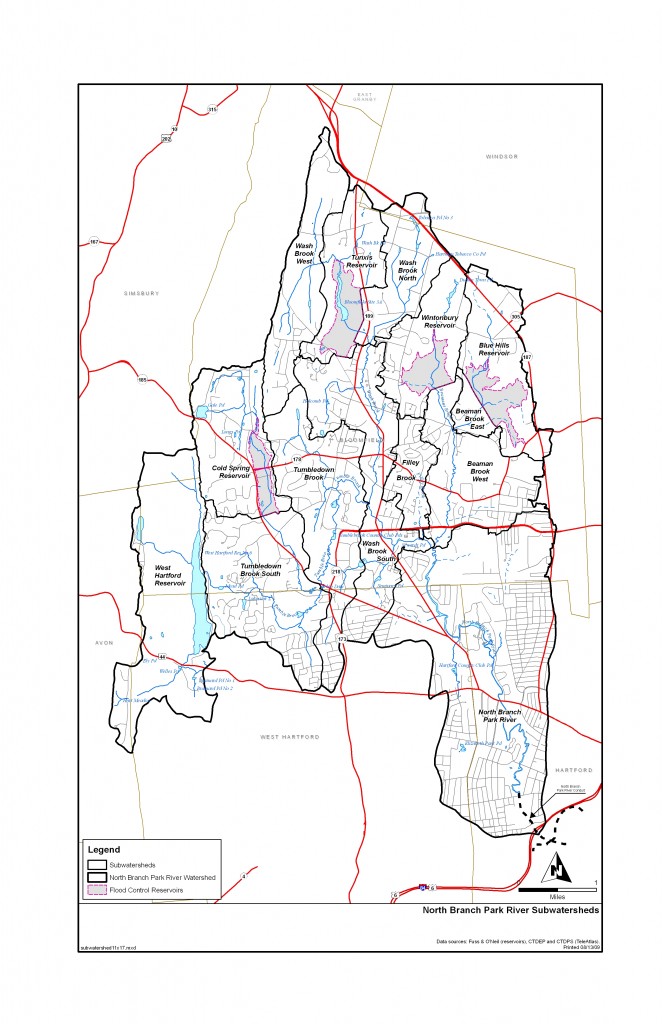Saturday, April 27th
10 – 12:30pm
North Branch walk: (a short walk)
with Alycia Jenkins (Sierra Club) and Brian Martin (Trust for Public Land)
Hartford International University for Religion & Peace (HIU)
77 Sherman Street (former “Hartford Seminary”)
North Branch Park River survey:

The 2010 North Branch Park River Watershed Management Plan is currently being updated. Project records are available online, North Branch Park River Watershed Management Plan .

The North Central Conservation District oversees a project team that includes Fuss & O’Neill, Meri LLC, and the Trust For Public Land. This project has been funded wholly or in part by the United States Environmental Protection Agency under assistance agreement LI-00A01075 to the National Fish and Wildlife Foundation. This project, formally titled “Nutrient and Pathogen Reduction through Implementation of the North Branch Park River Watershed Management Plan Within Hartford Urban Neighborhoods” will continue throughout summer of 2024. Fundamental future characteristics of the North Branch riparian corridor will be determined through multiple regional planning processes currently underway. We appreciate your input, which is important to this process.
Interested the North Branch Park River? Schedule a presentation that can be delivered virtually or an in-person program with your community, club, or neighborhood organization. Link to this presentation delivered to the Sierra Club Connecticut Chapter in September (09/17/2020).
Park Watershed is currently reviewing the Goals list as outlined in the 2010 North Branch Park River Watershed Plan with respect to accomplishments, slippages and updates. A summary review of that Goals list is available as a pdf version of a presentation delivered at an Stakeholder Implementation Meeting on September 8, 2017. However the file size (76.MB) is too large to be uploaded to this website. Contact Mary Pelletier to learn more about this project work, or arrange a presentation for your community group or club.
The North Branch Park River Watershed Management Plan concluded in July 31, 2010. The approved final document resides with the Connecticut Department of Energy and Environmental Protection, along with other watershed management plans and documents on the Ct DEEP website. For the details of the process, see the North Park Plan project website.
The plan is a comprehensive, yet practical planning document for the protection and restoration of water resources in the North Branch Park River watershed. The plan characterizes the watershed conditions, identify, investigate, and address the current and emerging issues facing the watershed, and have the clear potential to affect on-the-ground change within the watershed.
The watershed management plan development followed the U.S. Environmental Protection Agency (EPA) ‘Nine Element’ planning process guidance for the development of watershed-based plans. The guidance outlines nine key elements that establish the structure of the plan, including specific goals, objectives, and strategies to protect and restore water quality; methods to build and strengthen working partnerships; a dual focus on addressing existing problems and preventing new ones; a strategy for implementing the plan; and a feedback loop to evaluate progress and revise the plan as necessary. This approach will enable implementation projects under this plan to be considered for funding under Section 319 of the Clean Water Act.
The project team, led by Fuss & O’Neill, Inc., included the Farmington River Watershed Association, the Park River Watershed Revitalization Initiative, and New England Environmental, Inc. The North Branch Park River Watershed Management Plan was developed in cooperation with the CT DEEP, other governmental entities, stakeholder groups, and the general public. For more information about the planning process, and project documents, see the North Park Plan project website.
Note also the Total Maximum Daily Load (TMDL) for the North Branch is a detailed summary of the pollutant loading that has degraded water quality. “TMDLs provide the framework for restoring impaired waters by establishing the maximum amount of a pollutant that a waterbody can receive without adverse impact to fish, wildlife, recreation, or other uses.”
Ct Department of Energy and Environmental Protection

